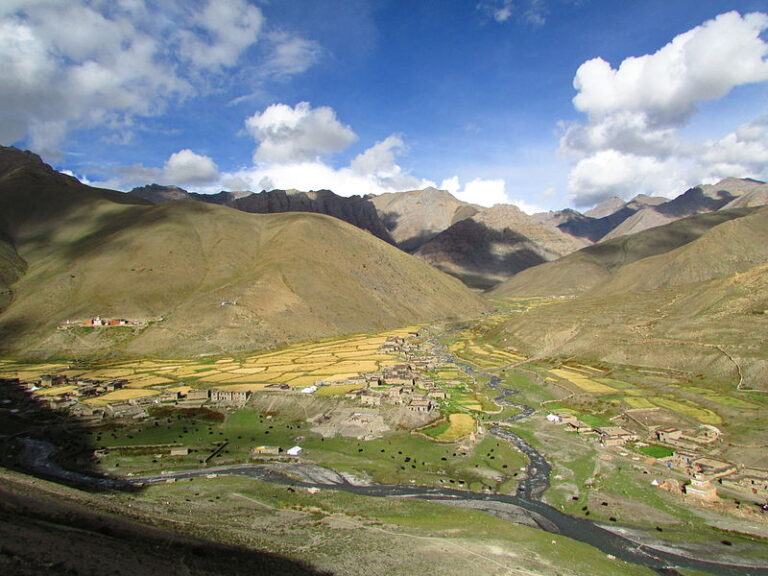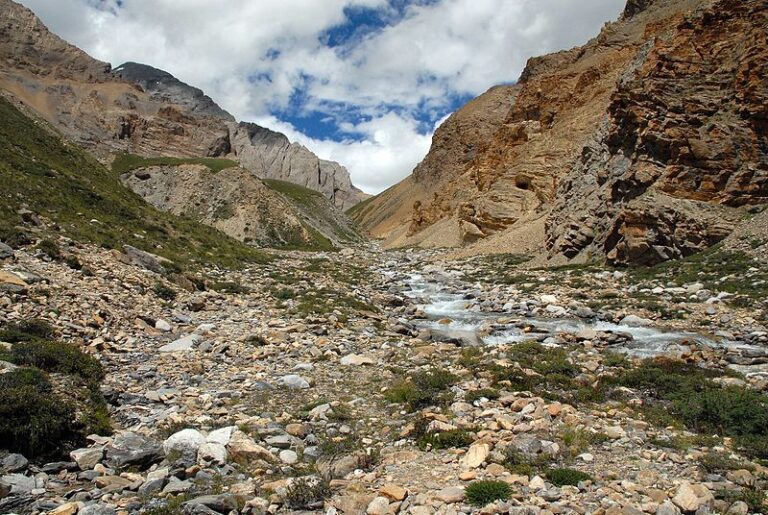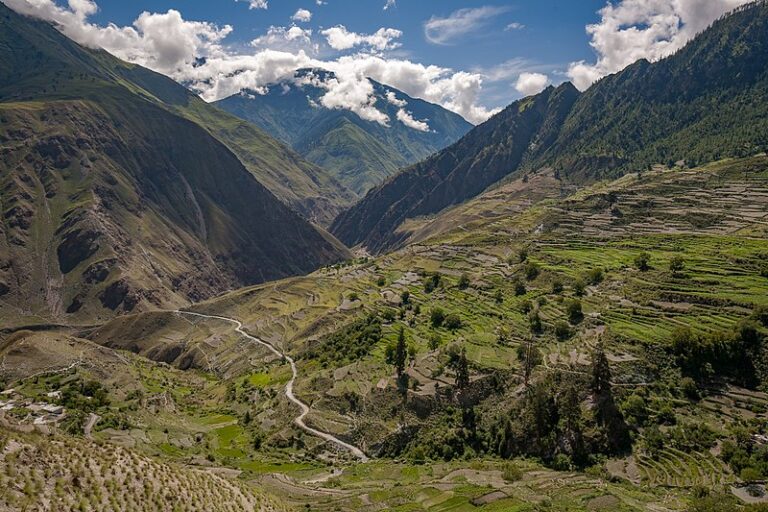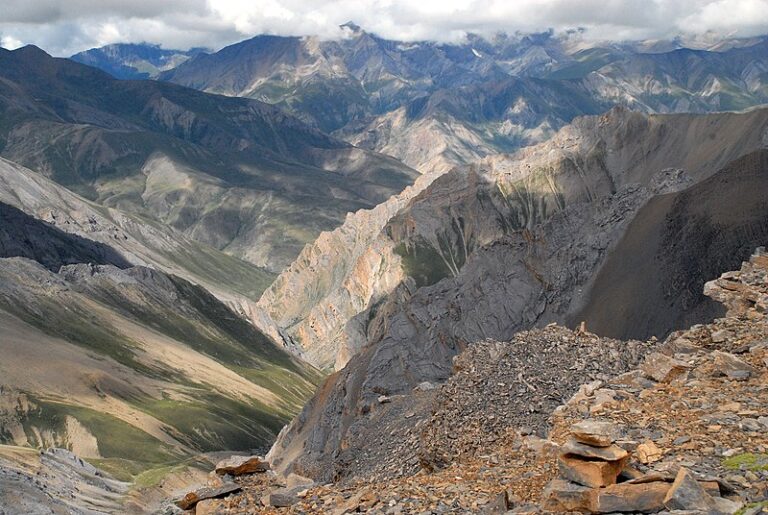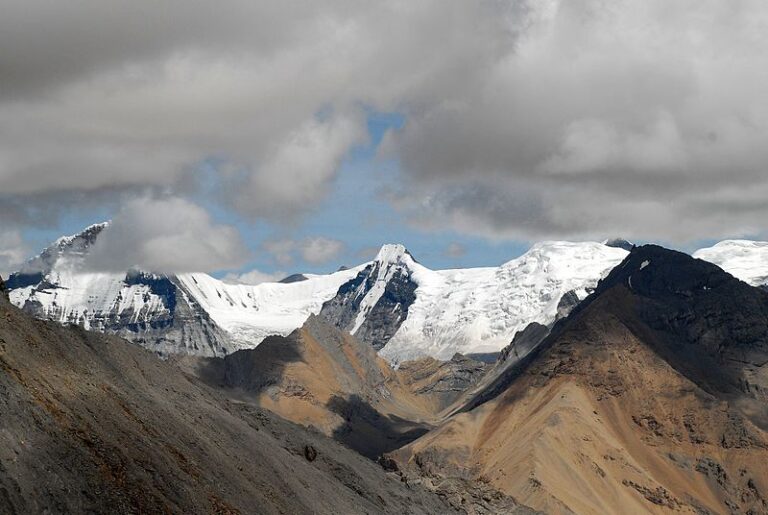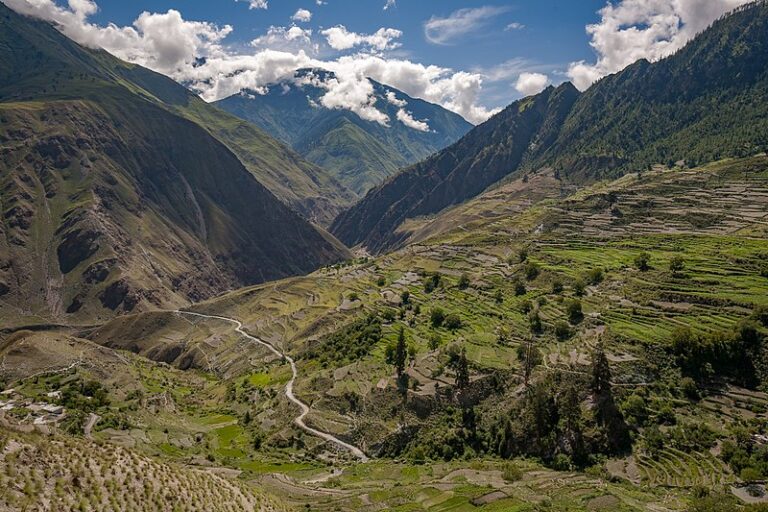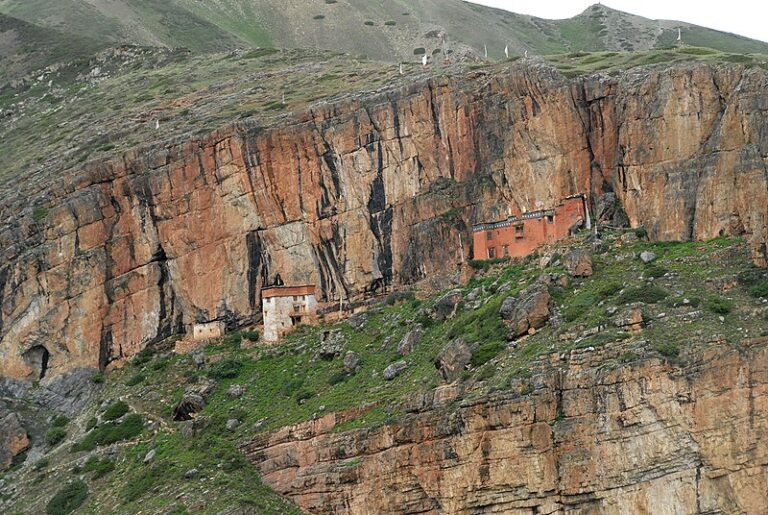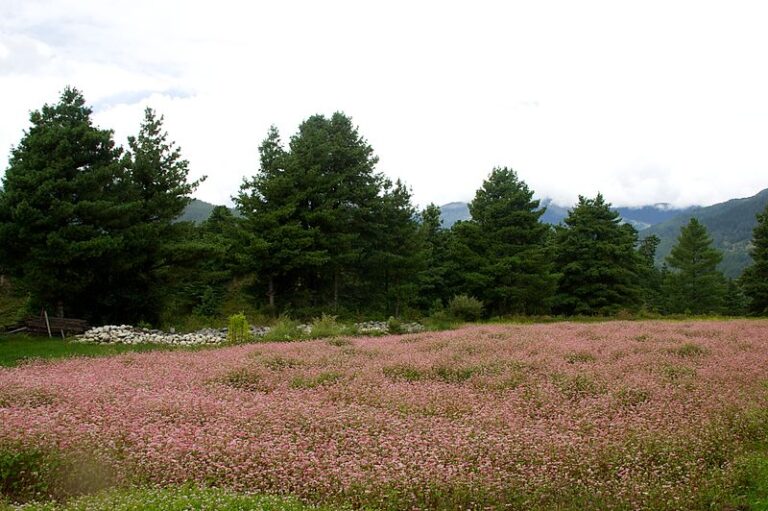Day 01 – Arrival and escort to the hotel – we will pick you up from the Tribhuwan international airport on your arrival date and your guide will escort you to the hotel. After checking the hotel your guide will brief you about the trekking program, trekking gear, trekking route, and preparation for the trek.
Day 02 – Permit arrange and sightseeing In Kathmandu – Today we will arrange our special permit for the Dolpo region. All of the foreign nationals are required to arrange a special permit for this restricted area. You will explore some of the ancient and historical places with our city guide.
Day 03 – Fly to Nepalgunj(152m.a.s.l) – 45 minutes flight – The 45 minutes of scenic flight bring us to Nepalgunj which is 152m and located in the Terai region of Nepal. In the afternoon, we will explore local markets, vegetable vendors selling seasonable vegetables and fruits. Stay overnight in the guesthouse.
Day 04 – Flight for Juphal and Kagani(2435m.a.s.l) – 40 minutes flight and 5 hours walk – The 40 minutes of flight brings us to Juphal where we will meet our trekking crews then we will head towards Kagani doing by often up and downhill trail. Begins of the trek we will descend to the Thulo Bheri River then continuously trek beside the river until the confluence of Thulo Bhri and Sulighat river. Along the trail, we will enjoy the views of wild marijuana, walnut trees, cactus, agave, and the occasional lizard zipping across the trail.
Day 05 – Trek to Rechi(2940m.a.s.l) – 6 to 7 hours walk – The trail passes along the Sulighat river with charms views of verdant Semi-tropical forest, canyons, turquoise river valley, small cascading waterfalls and some of the wildlife like monkeys, Baral(Himalayan blue sheep) and many species of birds and butterflies. We have to do several times up and downhill trail to get Rechi which is a beautiful place surrounding by bamboo, Cedar, and Pine forest. We will set up our tents here to spend a pleasant night.
Day 06 – Trek to Ringmo village(3640ma.s.l) – 6 to 7 hours walk – Begins of the trek, we will walk the shore of Sulighat river to get the confluence of Sulighat and Pungmo River. We will cross the river several times on traditional wooden bridges with carved “guardians” at either end. After 4 hours of the up and downhill trail brings us to Samduwa which is a small settlement and available some basic tea-houses to have lunch of the day. From here, the trail gently ascends through the forest of Pine, Juniper, and Bamboo. The steep climb is a little bit hard walk although, we will be rewarded with charms views of the canyon, river valley, Bon inscription on large rocks, and the longest waterfalls of Nepal, water flown from Phoksundo lake.
Day 07 – Rest and exploration of Ringmo village – There are many interesting things and pilgrimage sites to see around the Ringmo village. After breakfast, we will explore the Ringmo village to see amazing houses that are built with a wooden log, stones, and mud without using cement. some of the locals invite us to drink milk and butter tea, local beer known as Chhyang. After exploration of the village, we will visit an old Monastery which is stunning above the village that commands to see beautiful views of landscapes, villages, and cultivated terraced fields and also helps us to be acclimatized with the local environment.
Day 08 – Trek to riverside camp(3736m.a.s.l) – 7 hours walk – we will hike along a high cliffside trail dropping steeply into the lake and gently climb the steep, airy ridge with the view of brilliant blue lake view unfolds from above, as the backdrop of Mount Nurbu Khang stands prominent to the southeast. About two hours of uphill walk, the trail veers down to reach the northern lakeside in the glaciated valley of the upper Phoksumdo Khola where we pause and enjoy our lunch next to many paper birch – golden in fall. This area feels like the wildest part of the trip with massive, glacier-covered Kanjirowa Himal looming above to our left behind the towering tilted sandstone walls.
Day 09 – Trek to Nangdala Base Camp(4585m.a.s.l) – 7 hours walk – we will leave Phoksundo Khola and turn into the side canyon of steep and hard running Tuk Kyalsa Khola(stream) stream which is originated from near the Nangdala Pass. From here the treelines will disappear and lose the view of Kanjirowa. We will cross streams several times and the narrow trail passes through the rocky moraines, several small streams, shaded canyons so to walk with a stick is highly recommended. After a couple of hours of walk brings us to high pastureland where we will set up our tent to spend a joyful night.
Day 10 – Trek to Shey Gompa (4300m.a.s.l) – 7 hours walk – We will start our trek earlier than previous days because we going to cross a pass called Nagdala pass which is meters high above the sea level. Begins of the trek, we will climb approximately three hours to get top of the Nagdala which is marked with hundreds of Buddhist prayer flags. After capturing photos of beautiful landscapes and mountain views, we will steeply descend until a broad drying lakebed and stream. From here, the braided stream leads us to Shey Gompa pass by several mani walls and chhortens. We will set up our tent near the Monastery to spend a blissful night.
Day 11 – Rest day at Shey Gompa – An enjoyable rest day will recover our tired body and panic muscles. After lunch, we will visit Shey Gompa which is believed to be about 800 years old monastery, with murals inside and an ancient scroll describing the mythology behind the Crystal Mountain. The monastery is locally known as Shelri Sumdho Gompa. Shey Festival, the summer festival observed by the people of Dolpo with huge enthusiasm is hosted at Shey Gompa.
Day 12 – Trek to Namgung Gompa(4360m.a.s.l) 6 to 7 hours walk – After breakfast, our journey beside Sephu Khola to Shey La pass (5100m) with the views of typical Dolpo landscapes- barren and enchanting. Shey La Pass rewards us with the magnificent views of Mustang to the East, Tibet to the North and Kanjiroba, Kagmara and Riu Dhukta, or the Crystal Mountain, to the West. From here we will trek down to Namgung which is a local nomadic herding settlement.
Day 13 – Trek to Saldang (3620m.a.s.l) – 5 hours walk – Three hours of the hard climb from Namgung we will be top of the Saldang which is one of the picturesque areas of the region, command us to see breathtaking natural beauties. Saldang village belongs to the arid zone of the trans-Himalayan Tibetan plateau and consists of the five villages, having about eighty well-built houses with nearly six hundred people. Saldang village is not only good for agriculture but also good for a strategic location for the trade route with Tibet.
Day 14 – Trek to Nisal Gaun(3870m.a.s.l) – 6 hours walk – The path leads us to the north, following the Nagaon Khola River to Gungar Khola which flows from the northwest. From the confluence of Gungar and Nagon Khola, we turn east via the highland, barren and deserted landscapes to reach Nisal Gaon. Approximately 6 hours of walk, we will approach Nisal Gaun where we will spend one overnight.
Day 15 – Trek to Shimen Gaon(3849m.a.s.l) – 6 hours walk – Before to leave from here, we will explore a monastery called Yanjer monastery which is one of the important monasteries of the region the after exploration of this religious site we will head towards Shimen Gaun following by the Panjam river. Most of the time we will do up and downhill trail with charms views of landscapes, canyon, gurgle sound of streams to get Shimen which is our destination of the day. we will set up our tents and after a delicious meal, we will spend a joyful night in Shimen.
Day 16 – Optional rest day – depending on our health and physical fitness – There are not any larger settlements or good places between this place and Chhakra bhot so to do rest here would be a good idea to recover tired bodies and panning muscles. Although we will talk about it considering our situation. From Simen Gaon, we reach no larger settlements until we arrive at Chharka Bhot. This is a possible rest day before continuing this trail adventure. Overnight in tents.
Day 17 – Trek to Tinje Gaon(4130m.a.s.l) – 6 hours walk – Today we trek along the Panjan Khola riverside trail, passing several ancient meditation caves in the distance. The legend about Panzang valleys says ‘the group of monk ‘Bande’ made their home ‘tshang’ in the area thus it became known as the monk’s home ‘Bantshang’. The legend about Tinje village says ‘the region is shaped like the heel of person’s foot ‘tingba’ thus the village was called Tingyu and later permuted to Tinje village. Stay one overnight in Tinje village.
Day 18 – Trek to Chharka Bhot(4297m.a.s.l) – 7-hours walk From Tenji Gaon until we reach Chharka Bhot, we’ll encounter only seasonal yak pastures. We’ll pass no villages nor hike a wide trail, but consider that this trail has been in use from ancient times. Today the trail is used mostly for animal husbandry and travel between Dolpo and Mustang. Both days involve about 7 to 8 trekking hours. Chharka Bhot is a small developed place in upper Dolpo where we can find supplies and a small lodge. Chharka was known as SAKA in many years ago, SAKA is a Tibetan word which means “Good place” and also the village was famous for fine salt, because of there was a salt mine. Salt found in Chharka was the finest one hence the ‘Chharka’ means good salt. So, Chharka is named Good salt and a good place.
Day 19 – Trek to Nulungsumde Kharka(5000m.a.s.l) – 6 to 7 hours walk – There won’t be any villages for another two days, just we will trek through the several Kharka(Pasture) with views of verdant grassy land, rocky hills, flowing small streams, grazing some wildlife like deer, blue sheep and flying griffons above the high rugged rocky hills. Nulungsumde Kharka is a beautiful ground where we will set up our tent to spend a joyful night.
Day 20 – Trek to herder camp(4710m.a.s.l) – 7 to 8 hours walk – Today we will start our trek earlier than previous days due to cross two passes called Niwar and Jungben Pass. Begins of the trek, we will ascend almost 3 hours to get Niwar pass which is 4875m and another two hours of walk brings us to Jungben Pass 5485 meters high above the sea level. Both pass purpose to see splendid mountain views, deserted landscapes, and deep valley. From Jungben pass we will descend another two hours to get our camp for tonight.
Day 21 – To Shangta(3775m.a.s.l) – 6 to 7 hours walk – After cross over the two passes of Niwar and Jungben, we enter the highlands of Mustang. We continue our trek down the arid mountainside which offers many excellent views of the Mustang landscape as well as several prominent peaks of the Annapurna mountain range. Shangta is a village of Mustang where we going to sleep one overnight just above the village.
Day 22 – Trek To Kagbeni(2700m.a.s.l) – 6 hours walk – Today we begin downhill along the ancient trail that once connected traders between Mustang, Dolpo, and Tibet. We arrive at Kagbeni for lunch. Here we take a lodge instead of the tent to feel comfortable. After lunch, we will explore the Kagbeni village that commands to see wonderful houses made of stone, wooden log, and mud. The Kagbeni village commands to see many interesting things like 600 years old monastery, ruin houses, verdant Kali Gandaki beach and a funeral places of Tibetan people.
Day 23 – Trek to Jomsom(2730m.a.s.l) – 4 hours walk – We will follow the shore of the Kali Gandaki River which is also known as the source of Ammonite. Trek from Kagbeni to Jomsom is probably easiest walk entire the whole trip due to walk on the flat trail with splendid views of Nilgiri Himal, Muktinath Himal, and one of the top ten mountain of the world known as Dhaulagiri 8167m. We will have our lunch in Jomsom and relax for the rest of the day.
Day 24 – Fly from Jomsom to Pokhara – The 30 minutes of scenic flight brings us to Pokhara city which is well known as the paradise of Nepal. During the flight, we will have fascinating views of Annapurna, Manaslu, and Dhaulagiri mountain range. After lunch in Pokhara, we will hang around the shore of the Phewa Lake or ii someone interest in boating on the surface of the lake also we can do that.
Day 25 – Fly back to Kathmandu – 25 minutes flight.
Day 26 – After a successful trip Dolpo region, you will fly back to your homeland with a great experience of Nepal, different caste and culture of different places, and voyage of highland that make you a storyteller among your friends, family, and colleagues.
